Eleni Kanavas is the Internal Communications Administrator at CCRM. She has more than eight years of corporate communications experience working in the academic and health science fields. She graduated with an Honours BA in Journalism from the University of Toronto and an Ontario College Advanced Diploma in Journalism from Centennial College. Eleni previously worked at Sunnybrook Research Institute and the University of Toronto Scarborough Campus.
Growing organoids is a relatively new and exciting development in stem cell research. These micro organ-like cells are tiny, self-organized 3D tissue cultures that are derived from stem cells. Organoids are produced in large quantities in labs where researchers are able to replicate them to resemble organs such as the brain, kidney, lung, intestine, stomach and liver. Watch this video from the University of California to learn how brain organoids are made.
Stem cells in organoids was the theme of this year’s StemCellTalks Symposium hosted by the University of Toronto chapter of Let’s Talk Science on February 21.
Students studying biology in Grades 11 and 12, from 12 different public and private schools in the Greater Toronto Area, participated in the program. The students learned how stem cells and organoids may be able to model and eventually treat some of the most debilitating diseases in society, as well as the practical ethics practiced in stem cell science.
Marking its 11th year, the full day event gave students the opportunity to hear from scientists, clinicians and post-doctoral fellows during lectures and debates, and engage with volunteer graduate students during the knowledge sharing breakout sessions.
CCRM was a national sponsor again this year and two of my colleagues – Dr. Lise Munsie, Senior Development Manager, and Siofradh McMahon, Senior Manager of Clinical Translation and Regulatory Affairs – were guest speakers.
Dr. Munsie welcomed the students and gave an introduction to stem cell biology. She explained the difference between embryonic stem cells, adult stem cells and induced pluripotent stem cells. She discussed how these cells can be used for cell therapy and described the current state and future of stem cells in regenerative medicine.
Following the opening talk was a debate on using organoids vs. animal models in disease modelling, with Dr. Munsie and Dr. Ian Rogers, Associate Professor at the University of Toronto and Associate Scientist at the Lunenfeld-Tanenbaum Research Institute at Mount Sinai Hospital. In a show of hands, the students favoured Dr. Munsie’s argument, which supported the use of animal models. She argued that animal models in scientific research will remain a requirement to determine dosing and toxicity prior to introducing a drug into a human, and stressed the importance regulatory bodies put on having successful preclinical animal trials prior to moving into human clinical trials.
Dr. Munsie also added that organoids cannot mimic important biological processes that occur in the human body, like vascularization and immune response. As per her argument, organoids will certainly decrease the number of animals needed during pre-clinical development, but they will never make animal models completely obsolete.
Bio-ethicist Dr. Kalina Kamenova, Founder and Research Director of the Canadian Institute for Genomics and Society, moderated the second debate. Jennifer Kao, an MD/PhD student at the University of Toronto, and Adam Heidman-Sivitilli, Co-founder of Perfusia Biosciences, presented statements that supported the use of brain organoids and organoid technologies. They also discussed the importance of implementing regulatory guidelines and the ethical concerns that need to be addressed in stem cell research. In the end, there was no debate as both speakers agreed there is evidence to use both organoids and animal models in science.
In the afternoon, Dr. Jeff Wrana, Senior Investigator at Lunenfeld-Tanenbaum Research Institute and Professor in the Department of Molecular Genetics at the University of Toronto, gave the keynote lecture on stem cells in lab grown organs. His research group is currently exploring human patient specimens, animal models and 3D organoid models at the cellular and molecular level to understand the link between stem cell phenotypes, tissue regeneration and cancer.
Next, William Luong, Co-Chair of the StemCellTalks Toronto Organizing Committee, moderated a Q&A panel discussion on the ethical considerations of brain organoids and their efficacy in research. Students asked questions directly to the panel of experts: Dr. Chris Ahuja, a Neurosurgery Resident at the University of Toronto, Dr. Amy Wong, a Scientist at the Hospital for Sick Children, Siofradh McMahon, and Dr. Kamenova.
The take home message from the panelists was that regulations should not be expected to keep pace with cutting-edge innovation and, instead, experts must aim to create regulations that are sufficiently broad to enable innovation while still ensuring therapies are safe, effective and of high quality.
As the day came to an end, students played a fun trivia game to test their knowledge of stem cells and organoids. I’ll admit, I played too, and it was clear how much we had learned throughout the day. To the StemCellTalks Organizing Committee, congratulations on putting together another successful symposium!
Guest
Latest posts by Guest (see all)
- Regenerative immunotherapy: Hope for chronic autoimmune diseases - September 16, 2025
- Canada’s regenerative revolution: Why AI is the catalyst - September 4, 2025
- Summer by Design: A launchpad for future entrepreneurs and industry scientists - August 14, 2025


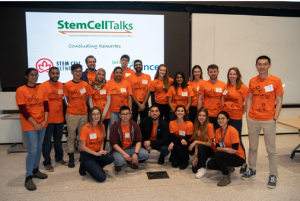
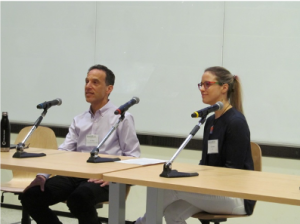
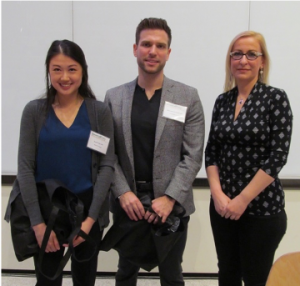
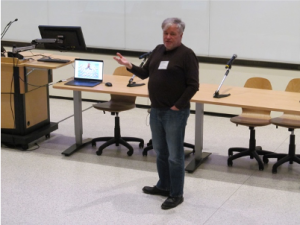
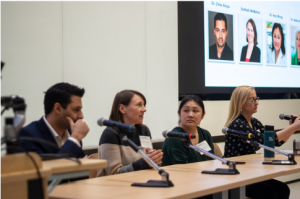




Comments